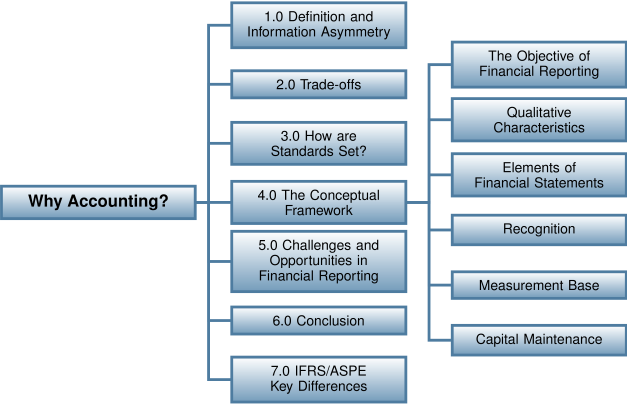Chapter 2: Why Accounting?
- Page ID
- 97913
\( \newcommand{\vecs}[1]{\overset { \scriptstyle \rightharpoonup} {\mathbf{#1}} } \)
\( \newcommand{\vecd}[1]{\overset{-\!-\!\rightharpoonup}{\vphantom{a}\smash {#1}}} \)
\( \newcommand{\dsum}{\displaystyle\sum\limits} \)
\( \newcommand{\dint}{\displaystyle\int\limits} \)
\( \newcommand{\dlim}{\displaystyle\lim\limits} \)
\( \newcommand{\id}{\mathrm{id}}\) \( \newcommand{\Span}{\mathrm{span}}\)
( \newcommand{\kernel}{\mathrm{null}\,}\) \( \newcommand{\range}{\mathrm{range}\,}\)
\( \newcommand{\RealPart}{\mathrm{Re}}\) \( \newcommand{\ImaginaryPart}{\mathrm{Im}}\)
\( \newcommand{\Argument}{\mathrm{Arg}}\) \( \newcommand{\norm}[1]{\| #1 \|}\)
\( \newcommand{\inner}[2]{\langle #1, #2 \rangle}\)
\( \newcommand{\Span}{\mathrm{span}}\)
\( \newcommand{\id}{\mathrm{id}}\)
\( \newcommand{\Span}{\mathrm{span}}\)
\( \newcommand{\kernel}{\mathrm{null}\,}\)
\( \newcommand{\range}{\mathrm{range}\,}\)
\( \newcommand{\RealPart}{\mathrm{Re}}\)
\( \newcommand{\ImaginaryPart}{\mathrm{Im}}\)
\( \newcommand{\Argument}{\mathrm{Arg}}\)
\( \newcommand{\norm}[1]{\| #1 \|}\)
\( \newcommand{\inner}[2]{\langle #1, #2 \rangle}\)
\( \newcommand{\Span}{\mathrm{span}}\) \( \newcommand{\AA}{\unicode[.8,0]{x212B}}\)
\( \newcommand{\vectorA}[1]{\vec{#1}} % arrow\)
\( \newcommand{\vectorAt}[1]{\vec{\text{#1}}} % arrow\)
\( \newcommand{\vectorB}[1]{\overset { \scriptstyle \rightharpoonup} {\mathbf{#1}} } \)
\( \newcommand{\vectorC}[1]{\textbf{#1}} \)
\( \newcommand{\vectorD}[1]{\overrightarrow{#1}} \)
\( \newcommand{\vectorDt}[1]{\overrightarrow{\text{#1}}} \)
\( \newcommand{\vectE}[1]{\overset{-\!-\!\rightharpoonup}{\vphantom{a}\smash{\mathbf {#1}}}} \)
\( \newcommand{\vecs}[1]{\overset { \scriptstyle \rightharpoonup} {\mathbf{#1}} } \)
\( \newcommand{\vecd}[1]{\overset{-\!-\!\rightharpoonup}{\vphantom{a}\smash {#1}}} \)
\(\newcommand{\avec}{\mathbf a}\) \(\newcommand{\bvec}{\mathbf b}\) \(\newcommand{\cvec}{\mathbf c}\) \(\newcommand{\dvec}{\mathbf d}\) \(\newcommand{\dtil}{\widetilde{\mathbf d}}\) \(\newcommand{\evec}{\mathbf e}\) \(\newcommand{\fvec}{\mathbf f}\) \(\newcommand{\nvec}{\mathbf n}\) \(\newcommand{\pvec}{\mathbf p}\) \(\newcommand{\qvec}{\mathbf q}\) \(\newcommand{\svec}{\mathbf s}\) \(\newcommand{\tvec}{\mathbf t}\) \(\newcommand{\uvec}{\mathbf u}\) \(\newcommand{\vvec}{\mathbf v}\) \(\newcommand{\wvec}{\mathbf w}\) \(\newcommand{\xvec}{\mathbf x}\) \(\newcommand{\yvec}{\mathbf y}\) \(\newcommand{\zvec}{\mathbf z}\) \(\newcommand{\rvec}{\mathbf r}\) \(\newcommand{\mvec}{\mathbf m}\) \(\newcommand{\zerovec}{\mathbf 0}\) \(\newcommand{\onevec}{\mathbf 1}\) \(\newcommand{\real}{\mathbb R}\) \(\newcommand{\twovec}[2]{\left[\begin{array}{r}#1 \\ #2 \end{array}\right]}\) \(\newcommand{\ctwovec}[2]{\left[\begin{array}{c}#1 \\ #2 \end{array}\right]}\) \(\newcommand{\threevec}[3]{\left[\begin{array}{r}#1 \\ #2 \\ #3 \end{array}\right]}\) \(\newcommand{\cthreevec}[3]{\left[\begin{array}{c}#1 \\ #2 \\ #3 \end{array}\right]}\) \(\newcommand{\fourvec}[4]{\left[\begin{array}{r}#1 \\ #2 \\ #3 \\ #4 \end{array}\right]}\) \(\newcommand{\cfourvec}[4]{\left[\begin{array}{c}#1 \\ #2 \\ #3 \\ #4 \end{array}\right]}\) \(\newcommand{\fivevec}[5]{\left[\begin{array}{r}#1 \\ #2 \\ #3 \\ #4 \\ #5 \\ \end{array}\right]}\) \(\newcommand{\cfivevec}[5]{\left[\begin{array}{c}#1 \\ #2 \\ #3 \\ #4 \\ #5 \\ \end{array}\right]}\) \(\newcommand{\mattwo}[4]{\left[\begin{array}{rr}#1 \amp #2 \\ #3 \amp #4 \\ \end{array}\right]}\) \(\newcommand{\laspan}[1]{\text{Span}\{#1\}}\) \(\newcommand{\bcal}{\cal B}\) \(\newcommand{\ccal}{\cal C}\) \(\newcommand{\scal}{\cal S}\) \(\newcommand{\wcal}{\cal W}\) \(\newcommand{\ecal}{\cal E}\) \(\newcommand{\coords}[2]{\left\{#1\right\}_{#2}}\) \(\newcommand{\gray}[1]{\color{gray}{#1}}\) \(\newcommand{\lgray}[1]{\color{lightgray}{#1}}\) \(\newcommand{\rank}{\operatorname{rank}}\) \(\newcommand{\row}{\text{Row}}\) \(\newcommand{\col}{\text{Col}}\) \(\renewcommand{\row}{\text{Row}}\) \(\newcommand{\nul}{\text{Nul}}\) \(\newcommand{\var}{\text{Var}}\) \(\newcommand{\corr}{\text{corr}}\) \(\newcommand{\len}[1]{\left|#1\right|}\) \(\newcommand{\bbar}{\overline{\bvec}}\) \(\newcommand{\bhat}{\widehat{\bvec}}\) \(\newcommand{\bperp}{\bvec^\perp}\) \(\newcommand{\xhat}{\widehat{\xvec}}\) \(\newcommand{\vhat}{\widehat{\vvec}}\) \(\newcommand{\uhat}{\widehat{\uvec}}\) \(\newcommand{\what}{\widehat{\wvec}}\) \(\newcommand{\Sighat}{\widehat{\Sigma}}\) \(\newcommand{\lt}{<}\) \(\newcommand{\gt}{>}\) \(\newcommand{\amp}{&}\) \(\definecolor{fillinmathshade}{gray}{0.9}\)It Was No Joke
Perhaps the timing was intentional. On April 2, 2009, the Financial Accounting Standards Board (FASB) in the United States voted to amend the accounting rules for financial instruments. In particular, the changes in the rules allowed banks and their auditors to apply "significant judgment" in the valuation of certain illiquid mortgage assets.
The issue arose directly as a result of the 2008 financial crisis. After the housing bubble of the early- to mid-2000s burst, resulting in the failure of several prominent financial institutions, many of the remaining banks were left with mortgage-backed securities that could not be sold. Existing accounting rules for financial instruments required those instruments be valued at the fair value, sometimes referred to as mark-to-market accounting. Unfortunately, many of these assets no longer had a market, and accountants were forced to report these assets at their "distressed" values.
The banking industry did not like this accounting treatment. Many industry lobbyists complained that a security that was backed by identifiable cash flows still had a value, even if it were currently unmarketable. They were concerned that reporting these distressed values in the financial statements would lower reported profits and further damage the already-weakened confidence in the banking sector. The banking industry lobbied lawmakers aggressively to put pressure on the FASB to change the rules. In the end, they succeeded, and the FASB made changes that allowed for alternative valuation techniques. The application of these techniques would result in higher profits than would have been reported under the old rules.
Although the banking industry was somewhat satisfied with this result, critics noted that the new rules gave the banks more latitude to report results that were less transparent and possibly less representative of economic reality. There is much at stake when financial results are reported, and accountants face pressures from parties both inside and outside the business to manipulate those results to achieve certain goals. Accountants need a solid foundation of rules and principles to rely on in making the judgments necessary when preparing financial statements. However, accounting standard setting can, at times, be a political process, and the practicing accountant needs to be aware that the profession's thoughtful principles may not always provide all the solutions.
(Source: Orol, 2009)
After completing this chapter, you should be able to:
- Identify the purpose of financial reporting.
- Describe the problem of information asymmetry, and discuss how this problem can affect the production of financial information.
- Describe how accounting standards are set in Canada and identify the key entities that are responsible for setting standards.
- Discuss the purpose of the conceptual framework, and identify the key components of the framework.
- Describe the qualitative characteristics of accounting information.
- Identify the elements of financial statements.
- Discuss the criteria required for recognizing an element in financial statements.
- Identify different measurement bases that could be used, and discuss the strengths and weaknesses of each base.
- Identify the alternative models of capital maintenance that could be applied.
- Discuss the relative strengths and weaknesses of rules-based and principles-based accounting systems.
- Discuss the possible motivations for management bias of financial information.
- Discuss the need for ethical behaviour by accountants, and identify the key elements of the codes of conduct of the accounting profession.
- Explain the effects on the accounting profession of changes in information technology.
The profession and practice of accounting has seen tremendous changes since the turn of the new millennium. A series of accounting scandals in the early 2000s, followed by the tremendous upheaval in capital markets and the world economy that resulted from the 2008 meltdown of the financial services industry, has led many to question the purpose and value of accounting information. In this chapter, we will examine the nature and purpose of accounting information and the key challenges faced by those who create accounting standards. We will also examine the accounting profession's response to those challenges, including the conceptual framework that currently shapes the development of accounting standards. We will also discuss the role of ethical behaviour in the accounting profession and the issues faced by practicing accountants.
Chapter Organization



